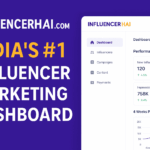Reach and impressions to see where one metric shines above the other when measuring the success of your business’s marketing efforts. Suppose you’ve wondered how to measure a campaign or ad’s effectiveness. In that case, these two metrics can help you understand how your audience interacted with your content.

Reach and impressions are two ways to measure how many people see your posts. Reach is the total number of distinct accounts that have seen a piece of content, while impressions are the number of times an amount of material has been noticed and measured by impressions.
The two metrics aren’t mutually exclusive—you, as an advertiser, can use them to measure success—but reach is generally better for measuring viral campaigns and other situations where you want something to spread as far as possible.
The reach of a piece of material is the number of distinct people that have viewed it. It doesn’t count the same person twice (even if they’ve seen it multiple times).
Reach and Impressions are both critical, but reach provides a more accurate measure for viral campaigns because it considers how many people clicked on your advertisements and become leads.
Impressions show how frequently a piece of material has been viewed, including repeated views from the same person. Reach is a better measure for viral campaigns and brand awareness than impressions. Still, it’s important to remember that reach doesn’t include repeat views from the same person.
Reach is generally better for measuring viral campaigns and other situations where you want something to spread as far as possible.
When reaching your audience, reach is different from impressions because it’s not just about how often content has been viewed or shared; it also includes how far that content has gone in terms of being passed along by others.
For example: if one person shares your article on Facebook, that counts as one reach point, but if two people share the same article because they liked each others’ posts too—that would be two points!
Impressions are better for measuring your ads’ impact on your audience and brand recognition – especially if you’re creating many ads.
Impressions are also good at measuring ad effectiveness since they reflect how many people have seen an ad, not just how many people have clicked on it.
For example, if one person sees your ad once in the morning and another two times later in the day (and those were distinct impressions), those two impressions would each count as one “view” or “click.”
Impression metrics can be misleading because they count anyone who sees your ad, regardless of whether they are interested enough to click or share it. For example:
Regarding your web property, you should always look at both metrics. Both are important and should be viewed together as a complete picture of success.
The reach metric measures how many people have seen your content across the internet. It doesn’t tell how many people clicked on something or engaged. Still, it does give an idea of how many people might be interested in that piece of content—and if they’re already looking at your site or app, then perhaps other things on those pages could draw their attention as well (which could lead them back here).
On the other hand, impressions show how often someone views something when they are on the page (or vice versa). This can be very useful in determining which channels need more attention from marketing efforts. It gives us insight into what works best for our audience members’ behavior patterns when interacting with our sites/apps.”
The best way to determine whether something is successful is to look at both reach and impressions metrics together. While impressions represent the overall number of times a piece of content has been seen, reach refers to the number of distinct accounts that have viewed it.
Reach is substantial because it lets you know how many people saw your post—and thus how many came back for more (or not). Impressions are less valuable; they only tell you how many times someone sees an advertisement.
We hope this information helps you make better decisions regarding advertising on your site. Reach and impression metrics are different ways to measure how many people see your posts, but they’re not mutually exclusive. Both should be examined when determining whether something is successful or not. Always look at reach and impression metrics together; both stories tell the story!
